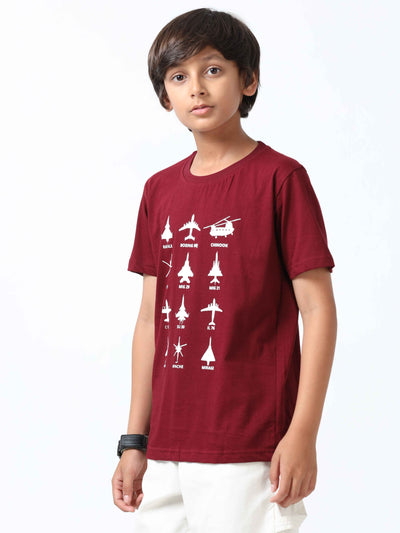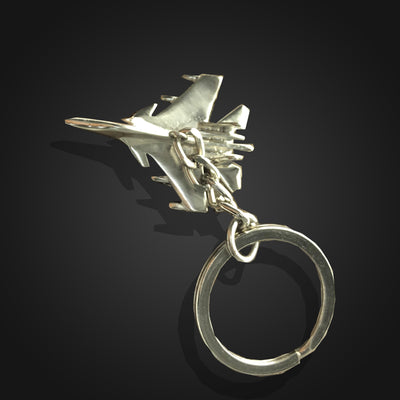Non-Refundable

What is Life Like for an Average Soldier in India’s Armed Forces?
Share
The life of a soldier in India’s armed forces is a remarkable journey marked by discipline, dedication, and resilience. The experiences of these men and women, who serve on the front lines and behind the scenes, provide a unique perspective on what it means to serve the nation. From their rigorous daily routines to the challenges they face, here's an in-depth look at the life of an average soldier in India’s armed forces.
1. Daily Routine and Training
A soldier’s day begins early, often before the sun rises. The daily schedule is meticulously structured to ensure that every soldier is prepared for the demands of their duties. Mornings start with physical training, which is crucial for maintaining peak fitness levels. This includes running, strength training, and various endurance exercises designed to build stamina and agility.
Physical training is complemented by rigorous drills. Soldiers practice weapon handling, marksmanship, and tactical maneuvers. This training is not just about physical fitness; it’s also about ensuring that soldiers are mentally prepared for any scenario they might encounter. Drills are conducted under simulated combat conditions to prepare soldiers for the stress and chaos of real-life situations.
After the physical and tactical training, soldiers engage in specialized training relevant to their roles. For instance, infantry soldiers might focus on fieldcraft and survival skills, while engineers might work on constructing and maintaining infrastructure. This specialized training ensures that every soldier is proficient in their specific area of expertise.
2. Life on Base
Life on a military base is characterized by order and discipline. Soldiers reside in barracks that are designed to accommodate their needs while adhering to strict standards of cleanliness and organization. Barracks are typically shared, with soldiers assigned to small rooms or dormitory-style accommodations. While the living conditions can be basic, the focus is on functionality and efficiency.
The base itself is equipped with facilities to support the soldiers’ well-being. This includes a mess hall where soldiers eat their meals together. The food served is nutritious and designed to meet the high energy demands of their daily activities. Meals are often simple but are prepared to ensure that soldiers receive the necessary vitamins, minerals, and calories to sustain their rigorous routines.
In addition to the mess hall, bases have various recreational facilities, such as gyms, sports grounds, and common areas where soldiers can unwind during their downtime. These facilities provide an opportunity for relaxation and socialization, helping to build camaraderie among soldiers.
3. Family and Personal Life
Balancing the demands of military life with personal and family responsibilities can be challenging. Soldiers often face extended periods away from home, especially if they are stationed in remote or conflict-prone areas. This separation can place a strain on family relationships, and maintaining a connection with loved ones requires effort and support from both sides.
To stay connected with their families, soldiers rely on various forms of communication. Letters, phone calls, and video chats are common ways to maintain contact. The military provides support services to help soldiers stay connected with their families, including facilities for video calls and mail services.
The absence from home is mitigated by the strong sense of community within the armed forces. Soldiers form close bonds with their peers, creating a support network that often becomes a second family. This camaraderie is crucial in managing the emotional and psychological challenges of military life.
4. Challenges and Risks
Being a soldier involves facing a range of challenges and risks. The nature of military duties means that soldiers are often exposed to hazardous conditions, including extreme weather, difficult terrain, and potential combat situations. The risk of injury or death is a constant reality, particularly in conflict zones.
The mental and emotional toll of military service is significant. Soldiers often deal with stress related to the high-stakes nature of their work, long periods away from home, and the pressures of operating in high-stress environments. The armed forces provide mental health support and counseling services to help soldiers cope with these challenges.
Despite these risks, soldiers display remarkable resilience and dedication. They are trained to handle stress, make quick decisions, and adapt to changing situations. This mental toughness is a crucial aspect of their training and contributes to their effectiveness in the field.
5. Honors and Recognition
The service of soldiers is honored and recognized through various awards and decorations. These accolades acknowledge the bravery, dedication, and sacrifices made by soldiers. Awards are given for acts of valor, distinguished service, and contributions to specific missions or operations.
Recognition also comes in the form of public appreciation. Soldiers are often celebrated during national events, ceremonies, and public functions. The respect and admiration of the public serve as a testament to the vital role that soldiers play in ensuring the security and stability of the nation.
6. Community and Culture
Military life fosters a strong sense of community and culture. Soldiers are part of a well-defined hierarchy and follow a code of conduct that emphasizes discipline, teamwork, and leadership. The military instills values such as integrity, commitment, and respect, which are integral to every soldier’s professional and personal development.
The armed forces also organize various cultural and recreational activities to boost morale and provide a break from routine. Events such as sports competitions, cultural festivals, and community outreach programs help soldiers maintain a balanced lifestyle and build connections within the military community.
Additionally, the military’s emphasis on continuous learning and development means that soldiers have access to educational and professional growth opportunities. This includes specialized training programs, leadership courses, and career advancement prospects, which contribute to their overall growth and effectiveness.
7. Life in Different Regions and Units
The experience of a soldier can vary significantly depending on their location and unit. Soldiers stationed in urban areas might have access to more amenities and resources, while those in remote or border areas face different challenges. The terrain, climate, and operational demands of their location influence their daily routine and responsibilities.
For instance, soldiers stationed in high-altitude areas like Siachen Glacier endure extreme cold and challenging conditions. Their training and equipment are tailored to withstand the harsh environment, and they must adapt their routines to the unique demands of their location.
Conversely, soldiers deployed in coastal or desert regions face different environmental challenges. The adaptation required for these conditions is reflected in their training and daily activities. Each unit has its own set of operational priorities and focuses, adding to the diversity of experiences within the armed forces.
8. Future Prospects and Career Development
A career in the armed forces offers numerous opportunities for personal and professional development. Soldiers have the chance to advance through the ranks, take on leadership roles, and gain specialized skills. The military provides pathways for career progression, including opportunities for further education and training.
Post-service career prospects are also supported by various programs and initiatives. Veterans often benefit from government schemes designed to help them transition to civilian life, including job placement services, educational benefits, and support for entrepreneurship.
The skills and experiences gained during military service are highly valued in the civilian workforce. Leadership, teamwork, and problem-solving abilities developed in the armed forces translate well into various industries, providing soldiers with a strong foundation for their future careers.
ntroducing Military Marvels
At Military Marvels, we are passionate about celebrating the valor and dedication of the Indian Armed Forces. Our brand offers a range of high-quality merchandise inspired by the iconic uniforms of the Army, indian navy t shirt and Air Force. Whether you are a proud supporter, a veteran, or simply appreciate the military's discipline and heritage, Military Marvels has something for you.
Our Product Range
Military Marvels offers a diverse collection of apparel designed to capture the essence of military pride:
- T-Shirts: Our t-shirts feature designs inspired by the combat and service uniforms of the Indian indian army tshirt , Navy, and Air Force. Made from premium materials, they provide comfort and durability for everyday wear.
- Jackets: Stay warm and stylish with our Indian air force jackets , which take cues from the military’s functional and rugged outerwear. Perfect for outdoor activities and casual outings, our Indian air force jackets are both practical and fashionable.
- Joggers and Track Pants: Combining comfort and style, our joggers and track pants are ideal for workouts, lounging, or on-the-go activities. They feature designs that pay homage to the military’s dedication and resilience.
- Shorts: Our shorts are perfect for the summer months, offering breathability and comfort. They are designed with elements reminiscent of military attire, making them both stylish and practical.

Conclusion
Life for an average soldier in India’s armed forces is a journey of dedication, sacrifice, and resilience. The demanding routines, challenging conditions, and unwavering commitment to duty define their experiences. Soldiers face numerous obstacles but remain steadfast in their mission to protect and serve the nation.
The structure, discipline, and camaraderie of military life contribute to a unique and fulfilling experience. Soldiers’ dedication to their roles, coupled with the support of their peers and the armed forces, ensures that they are well-prepared to meet the demands of their service. Their courage and commitment are a testament to the strength of India’s armed forces and the enduring spirit of those who serve.
Frequently Asked Questions (FAQs)
1. What does a typical day look like for a soldier in India’s armed forces?
A typical day for a soldier starts early, often before sunrise, with physical training that includes running, strength exercises, and endurance drills. The day also involves tactical training, drills, and specialized tasks relevant to their role. Soldiers adhere to a structured schedule that balances physical fitness, skills development, and duties.
2. How do soldiers maintain their physical fitness?
Soldiers maintain physical fitness through rigorous daily exercise routines, including cardio, strength training, and obstacle courses. Fitness is a critical aspect of their training, ensuring they are prepared for the physical demands of their duties. Regular assessments and training sessions help them stay in peak condition.
3. What are the living conditions like on a military base?
Living conditions on a military base are functional and disciplined. Soldiers live in barracks, which can be shared and are designed to be clean and organized. Bases have mess halls for meals, recreational facilities like gyms and sports grounds, and areas for relaxation and socialization.
4. How do soldiers stay connected with their families?
Soldiers stay connected with their families through letters, phone calls, and video chats. The military provides support services to facilitate communication, including mail services and facilities for video calls. Maintaining these connections helps soldiers manage the challenges of being away from home.
5. What are some of the challenges soldiers face?
Soldiers face various challenges, including exposure to hazardous conditions, long periods away from home, and the mental and emotional stress of their duties. The risk of injury or death, particularly in conflict zones, adds to these challenges. The armed forces provide support to help soldiers cope with these difficulties.
6. What types of recognition and awards do soldiers receive?
Soldiers receive various awards and decorations for their bravery, distinguished service, and contributions to specific missions or operations. Public recognition and ceremonies also honor their service and sacrifices, reflecting the respect and appreciation of the nation.
7. How does military life affect personal and family relationships?
Military life can place a strain on personal and family relationships due to extended periods away from home. However, soldiers and their families receive support from the armed forces to manage these challenges. The strong sense of community within the military also provides emotional support.
8. What are the career prospects for soldiers after their service?
Soldiers have opportunities for career advancement within the armed forces, including leadership roles and specialized training. After service, veterans benefit from programs designed to assist with transitioning to civilian life, such as job placement services, educational benefits, and entrepreneurship support.
9. How does the environment affect a soldier’s duties?
The environment in which a soldier is stationed can significantly impact their duties. Soldiers stationed in high-altitude areas, deserts, or coastal regions face unique challenges related to weather, terrain, and operational demands. Their training and equipment are tailored to handle these specific conditions.
10. What role does community play in a soldier’s life?
Community is a crucial aspect of a soldier’s life. The camaraderie among peers provides emotional support and helps manage the stresses of military life. The military fosters a strong sense of community through structured interactions, cultural activities, and support networks.




